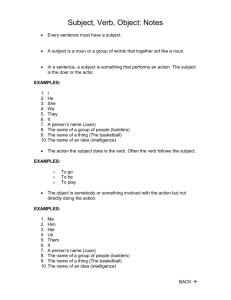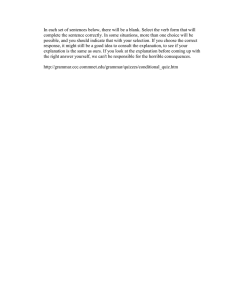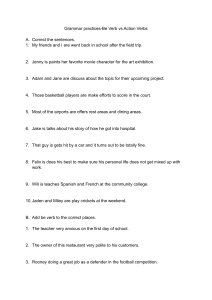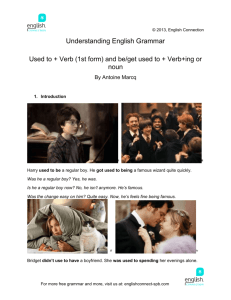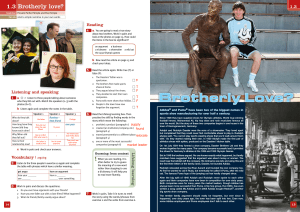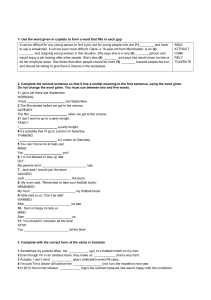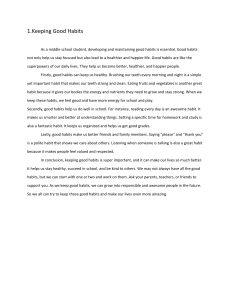Mr. LeRoy Spring 2013 ESOL Grammar 4
advertisement
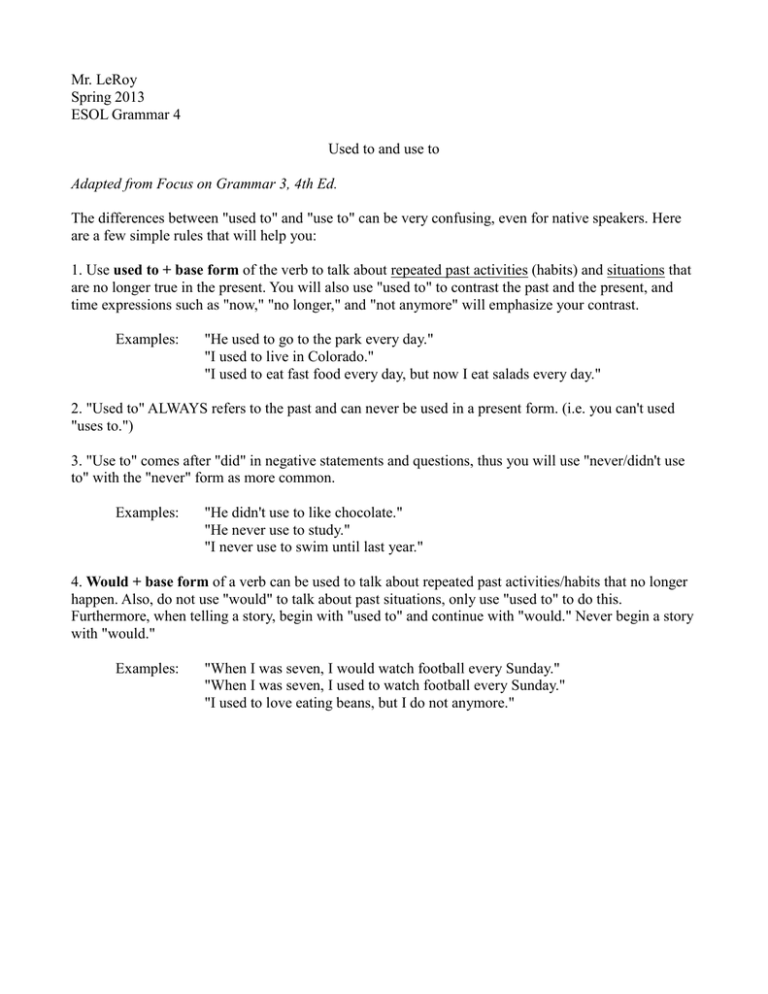
Mr. LeRoy Spring 2013 ESOL Grammar 4 Used to and use to Adapted from Focus on Grammar 3, 4th Ed. The differences between "used to" and "use to" can be very confusing, even for native speakers. Here are a few simple rules that will help you: 1. Use used to + base form of the verb to talk about repeated past activities (habits) and situations that are no longer true in the present. You will also use "used to" to contrast the past and the present, and time expressions such as "now," "no longer," and "not anymore" will emphasize your contrast. Examples: "He used to go to the park every day." "I used to live in Colorado." "I used to eat fast food every day, but now I eat salads every day." 2. "Used to" ALWAYS refers to the past and can never be used in a present form. (i.e. you can't used "uses to.") 3. "Use to" comes after "did" in negative statements and questions, thus you will use "never/didn't use to" with the "never" form as more common. Examples: "He didn't use to like chocolate." "He never use to study." "I never use to swim until last year." 4. Would + base form of a verb can be used to talk about repeated past activities/habits that no longer happen. Also, do not use "would" to talk about past situations, only use "used to" to do this. Furthermore, when telling a story, begin with "used to" and continue with "would." Never begin a story with "would." Examples: "When I was seven, I would watch football every Sunday." "When I was seven, I used to watch football every Sunday." "I used to love eating beans, but I do not anymore."
